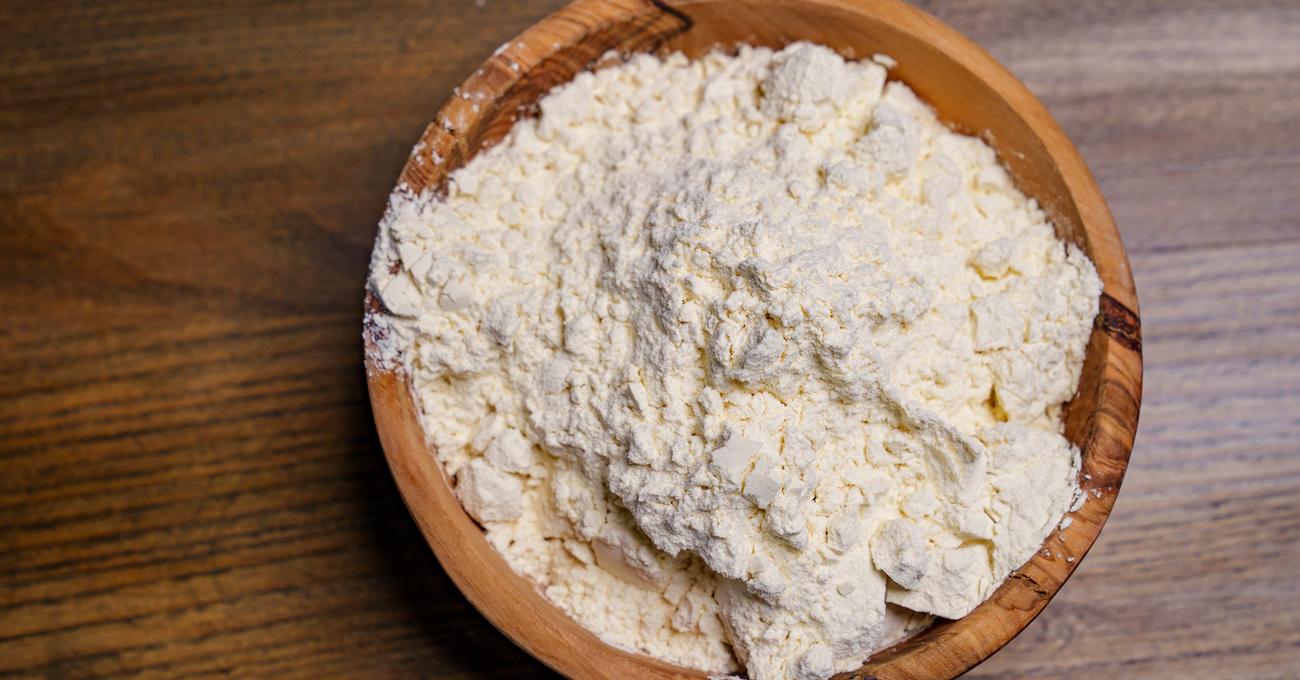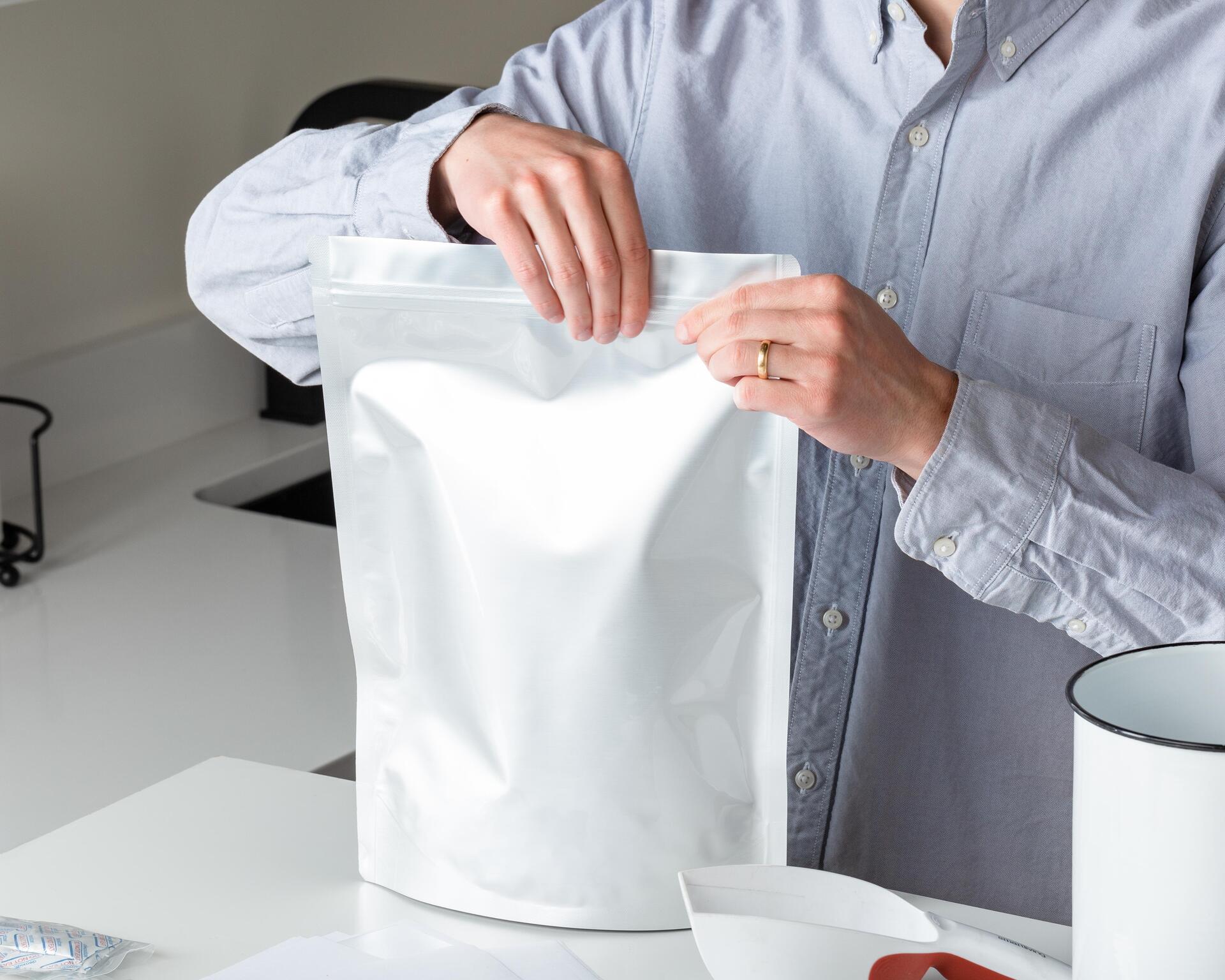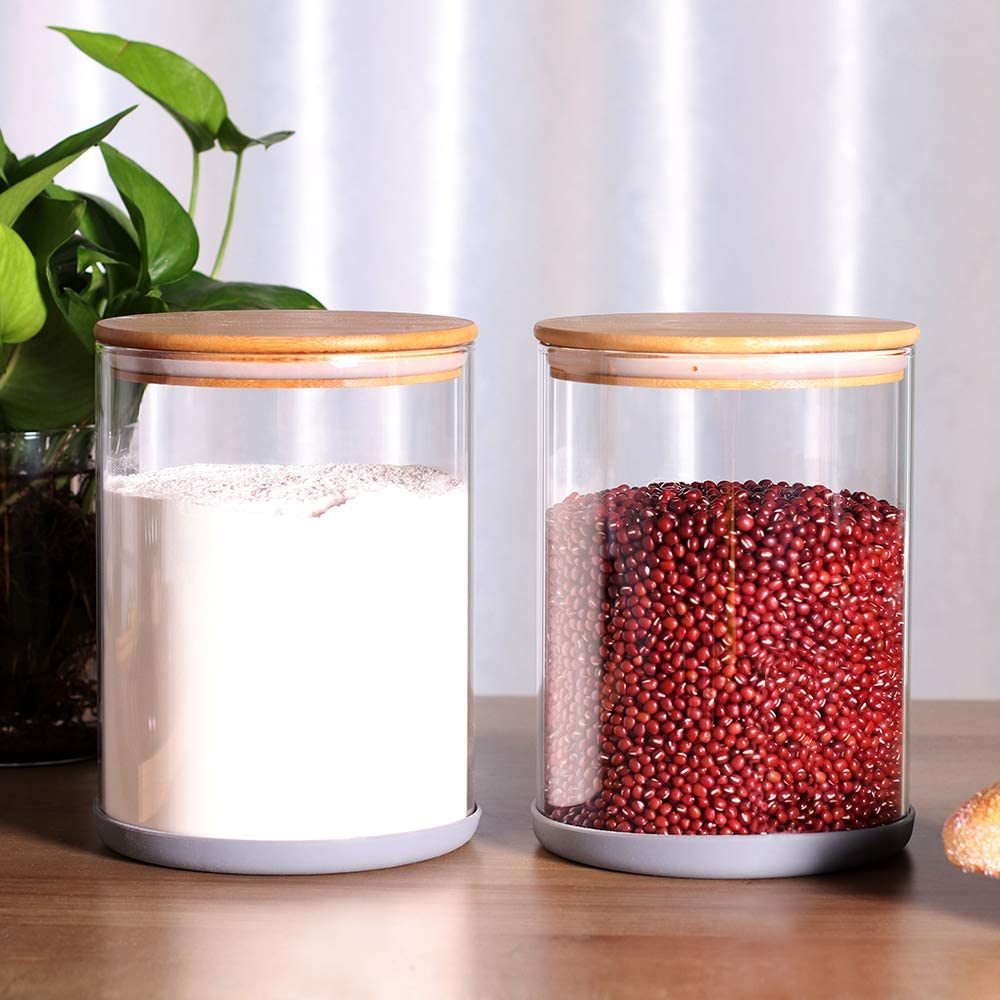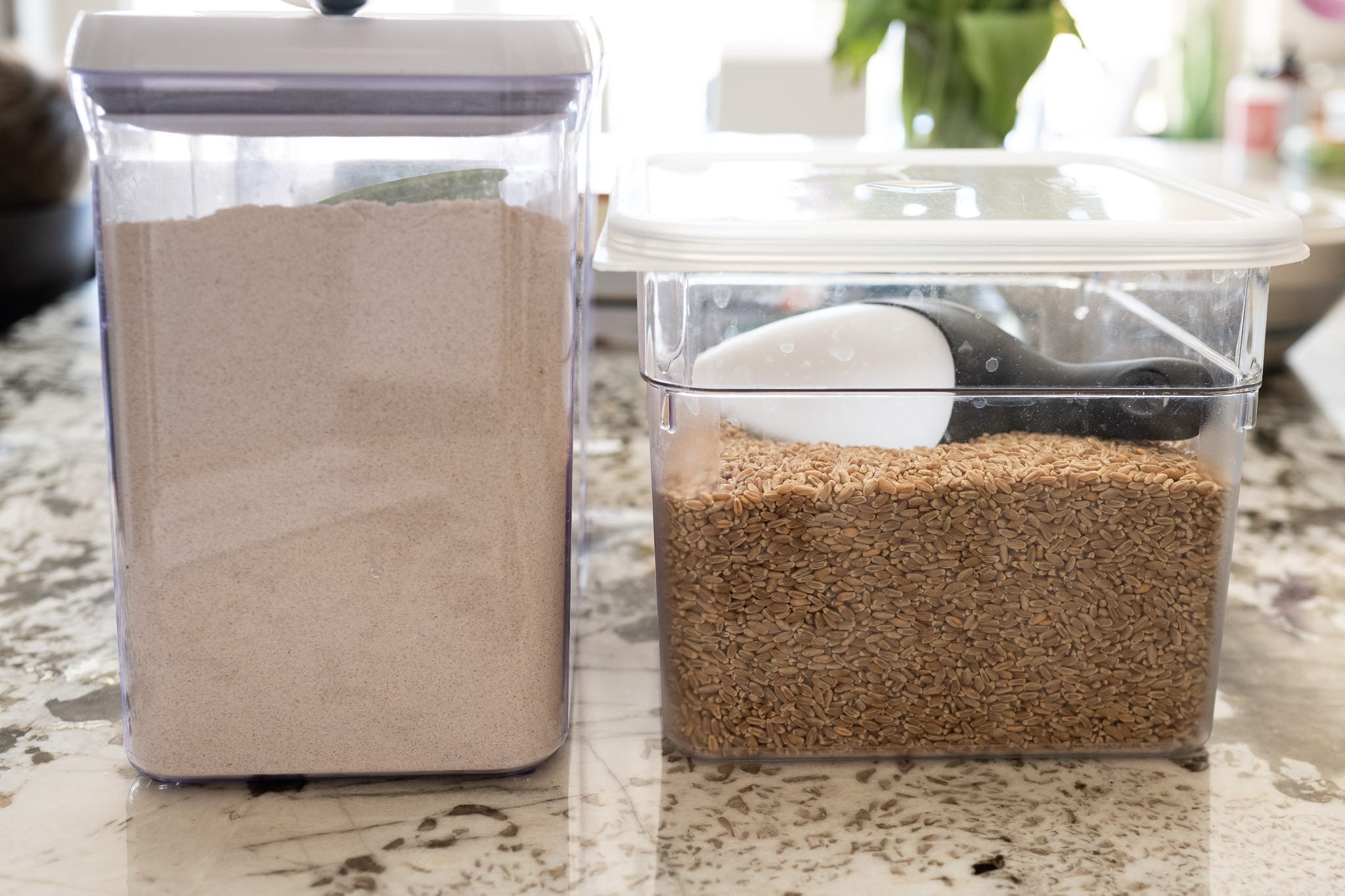

Articles
How To Store Flour Long Term
Modified: February 23, 2024
Learn the best methods for storing flour long term with these helpful articles. Keep your flour fresh and ready to use whenever you need it.
(Many of the links in this article redirect to a specific reviewed product. Your purchase of these products through affiliate links helps to generate commission for Storables.com, at no extra cost. Learn more)
Introduction
Flour is a staple ingredient in many households, used to make a variety of delicious baked goods and savory dishes. However, buying flour in bulk or during sales can often lead to the need for long-term storage solutions. Properly storing flour is essential to maintain its quality and prevent spoilage. In this article, we will explore the best practices for storing flour long-term, ensuring that you can enjoy fresh and flavorful flour for extended periods.
Understanding how to store flour effectively requires knowledge of its shelf life. Like many food items, flour has a limited lifespan, and its quality can deteriorate over time. The shelf life of flour varies depending on factors such as its type, processing method, and storage conditions. By understanding the factors that contribute to flour spoilage, you can implement strategies to extend its shelf life and maintain its freshness.
Choosing the right containers for flour storage is crucial to keep it safe from moisture, pests, and environmental factors. The container should be airtight, sturdy, and made from food-grade materials to ensure the integrity of the flour. Additionally, proper cleaning and sanitization of the storage containers are essential to prevent contamination and preserve the quality of the flour.
Preparing flour for long-term storage involves a few simple steps. It is essential to check for any signs of infestation or spoilage before storing the flour. Properly sifting the flour and removing any foreign particles can also contribute to the longevity of the stored product. By taking these precautions, you can prevent any potential issues and store the flour in optimal conditions for an extended period.
Key Takeaways:
- Properly storing flour long-term involves choosing the right containers, preparing the flour, and considering factors like temperature and moisture to maintain its freshness and quality.
- To prevent waste, rotate older flour first, repurpose or donate excess flour, and purchase quality flour. Proper storage and mindful usage can minimize unnecessary spoilage.
Read more: How To Store Bulk Flour Long-Term
Understanding the Shelf Life of Flour
Before diving into the details of how to store flour long-term, it is important to understand the shelf life of this essential ingredient. Flour, especially when stored properly, can last for a significant amount of time. However, various factors can affect its freshness and quality.
The shelf life of flour depends on its type and processing method. All-purpose flour, which is commonly used in baking, has a longer shelf life compared to more perishable flours like whole wheat or rye. Furthermore, highly processed flours tend to have a longer shelf life than unbleached or whole-grain flours.
In general, properly stored flour can last anywhere from 6 months to 1 year. However, it’s important to note that this is just an estimate, and the quality of the flour can deteriorate over time. Factors such as exposure to air, moisture, heat, and pests can accelerate spoilage.
Another important consideration is the presence of oils in the flour. Whole grain flours and nut-based flours contain oils that can turn rancid over time, affecting the taste and quality of the flour. It’s important to take this into account when storing these types of flours, as they may have a shorter shelf life compared to refined flours.
To maximize the shelf life of your flour, it’s crucial to store it in optimal conditions. Proper storage involves protecting the flour from moisture, extreme temperatures, air, and pests, which can all contribute to spoilage. In the next section, we will explore the best practices for choosing the right containers for flour storage.
Choosing the Right Containers for Flour Storage
When it comes to storing flour long-term, selecting the right containers is key to preserving its freshness and quality. Airtight and food-grade containers provide the ideal environment for flour storage, protecting it from moisture, pests, and other environmental factors that can lead to spoilage.
Glass jars with rubber gasket seals are a popular choice for flour storage. These jars are not only airtight but also allow you to see the contents inside, making it easy to identify the type of flour and monitor its freshness. Opt for jars with wide openings for easy scooping and access to the flour.
Plastic containers made from food-grade materials are also suitable for storing flour. Look for containers with tight-fitting lids that create a secure seal. Make sure that the plastic used is safe for food storage and does not leach any harmful chemicals into the flour.
If you choose to use plastic bags for flour storage, ensure they are food-grade and thick enough to prevent punctures. Double bagging can provide an extra layer of protection against moisture and pests. Seal the bags tightly, removing as much air as possible, and consider using a twist tie or clip to secure the opening.
Whichever container you choose, it is crucial to clean and sanitize it thoroughly before storing flour. Even brand new containers can harbor bacteria or contaminants that could spoil the flour. Wash the containers with soap and hot water, rinse them thoroughly, and allow them to dry completely before use.
By selecting the appropriate containers and taking the time to clean and sanitize them, you can create an optimal storage environment for your flour, ensuring its freshness and quality over an extended period.
Preparing Flour for Long-Term Storage
Properly preparing flour before storing it is essential to ensure its longevity and quality. There are a few steps you can take to prepare the flour for long-term storage.
First, it’s important to check the flour for any signs of infestation or spoilage. Inspect the flour for any unusual odors, discoloration, or presence of pests such as weevils or larvae. If you notice any of these signs, it is best to discard the flour to prevent contamination of other stored items.
Next, it is advisable to sift the flour before storing it. Sifting helps remove any lumps or foreign particles that may have been introduced during packaging or transportation. This step ensures that your stored flour is free from impurities and easier to work with when you eventually use it.
Using a fine-mesh sieve or flour sifter, pass the flour through, gently tapping or shaking to separate any clumps. This process also aerates the flour, keeping it light and fluffy. After sifting, transfer the flour to a clean, dry container for storage.
Another tip for preparing flour for long-term storage is to consider the option of oxygen absorbers. These small packets remove oxygen from the container, reducing the risk of spoilage and the development of mold or bacteria. Oxygen absorbers can be purchased from food storage supply stores or online retailers. Simply place one or two absorbers inside the container before sealing it.
Lastly, make sure the container is tightly sealed to prevent air and moisture from entering. This will help maintain the freshness of the flour and prevent any potential spoilage. If using bags, squeeze out excess air before sealing, or consider using a vacuum sealer for airtight packaging.
By following these preparation steps, you can ensure that your flour is in optimal condition for long-term storage. Properly prepared flour will maintain its quality and be ready for use whenever you need it.
Factors to Consider for Optimal Flour Storage
When storing flour long-term, several factors should be taken into consideration to ensure optimal storage conditions and maintain its freshness. By addressing these factors, you can prolong the shelf life of your flour and keep it in peak condition for an extended period.
The first factor to consider is temperature. Flour should be stored in a cool, dry place away from direct sunlight and heat sources. Exposure to high temperatures can cause the flour to spoil more quickly and lose its quality. Aim for a storage temperature between 50°F (10°C) and 70°F (21°C). Avoid storing flour in areas such as the attic, garage, or near the stove or oven, as these locations can be prone to temperature fluctuations.
Moisture is another crucial factor to address when storing flour. Moisture can lead to the growth of mold, bacteria, and pests, significantly reducing the shelf life of the flour. Ensure that the storage area is dry and free from any sources of moisture. It is also beneficial to use moisture-absorbing packets or desiccants to further protect the flour from humidity. If the storage area is prone to high humidity, consider placing the flour containers in larger airtight containers or using moisture-proof bags.
Exposure to air is also detrimental to flour quality. Oxygen can cause the flour to oxidize, affecting its flavor and nutritional value. To reduce exposure to air, ensure that your storage containers are airtight and properly sealed. This will help preserve the freshness of the flour and prevent it from absorbing any odors or flavors from its surroundings.
Additionally, the location of the storage area plays a role in flour storage. Choose a clean, odor-free space that is separate from strong-smelling items such as cleaning agents, spices, or chemicals. Flour can absorb odors, compromising its taste and quality. Keeping it away from such sources will help maintain its original flavor.
Lastly, consider the frequency of access to the stored flour. If you frequently open and close the container, increased exposure to air and temperature fluctuations can impact its freshness. If possible, divide your flour into smaller portions and store them in individual containers. This way, you can access one portion at a time while keeping the remaining flour sealed and protected.
By considering these factors for optimal flour storage – temperature, moisture, air exposure, location, and frequency of access – you can significantly extend the shelf life and quality of your flour.
Read more: How To Store White Flour Long-Term
Properly Storing Flour in Different Environments
Proper storage of flour is essential regardless of the environment in which you live. However, there are specific considerations to keep in mind when storing flour in different environments to ensure its longevity and quality.
Humid Environments:
In humid environments, moisture can pose a significant challenge to flour storage. The excess humidity can cause the flour to clump, develop mold, and spoil more quickly. To combat this, it is essential to store flour in airtight containers to protect it from moisture. You can also consider using moisture-absorbing packets or desiccants to further reduce humidity levels within the storage containers. Additionally, storing the flour in a cool, dry area of the house will help minimize the impact of the high humidity.
Dry Environments:
While dry environments may be less prone to moisture-related issues, they can still have an impact on flour storage. In extremely dry climates, flour can become dehydrated and lose its moisture content, resulting in reduced freshness and quality. To prevent this, it is advisable to store flour in well-sealed containers and consider using moisture-absorbing packets to retain optimal moisture levels. Additionally, placing the flour containers away from direct sunlight will help maintain its quality by protecting it from UV rays and heat exposure.
Cold Environments:
In colder environments, such as during winter months or in refrigerated storage areas, condensation can occur when warm air comes into contact with the cold flour. This condensation can introduce moisture into the flour and compromise its quality. To prevent this, allow the flour to come to room temperature before opening the container. This will help reduce the temperature differential and minimize condensation. Additionally, ensure that the storage containers are airtight to prevent any moisture from entering.
Read more: How To Store Flour Long Term In Buckets
Warm Environments:
Storing flour in warm environments can accelerate the degradation process and shorten its shelf life. High temperatures can cause the flour to turn rancid, develop off-flavors, and attract pests. It is crucial to store flour away from direct heat sources, such as stoves or ovens. Instead, choose a cool and dry area of the house for storage. If necessary, using fans or air conditioning to maintain a comfortable temperature can help extend the shelf life of the stored flour.
Regardless of the environment, regularly monitoring and inspecting stored flour is essential. Check for any signs of spoilage, including mold growth, off smells, or pest activity. Dispose of any flour that shows signs of contamination to prevent it from affecting the rest of the stored supply.
By considering the specific challenges posed by different environments and implementing the appropriate storage measures, you can ensure that your flour remains fresh and of high quality in any setting.
Tips for Protecting Flour from Pests and Contamination
When storing flour long-term, it is crucial to protect it from pests and contamination, as these can significantly impact its quality and safety. Here are some tips to help you keep your flour free from unwanted visitors and maintain its freshness:
1. Use Airtight Containers:
Store your flour in airtight containers to prevent pests such as weevils, beetles, or ants from accessing and contaminating it. Ensure that the lids or closures create a tight seal to keep out any unwanted intruders.
2. Clean Storage Area:
Before storing your flour, thoroughly clean the storage area to eliminate any potential sources of contamination. Remove any food particles, spills, or crumbs that might attract pests. Regularly clean the area to prevent the buildup of dirt or debris.
Read more: How To Store Bread Flour Long Term
3. Bay Leaves:
Add a few bay leaves to your flour containers. Bay leaves act as a natural deterrent for pests due to their strong aroma. The scent helps ward off common pantry pests and keep your flour protected.
4. Freezing or Heating:
If you suspect that your flour might be infested by pests, you can freeze it for a few days or heat it in the oven to kill any eggs or larvae present. Place the flour in a sealed bag or container and freeze it for at least 48 hours. Alternatively, spread the flour on a baking sheet and heat it in a preheated oven at 140°F (60°C) for 30 minutes.
5. Regular Inspection:
Regularly inspect your stored flour for any signs of pests, such as webs, larvae, or small holes in the container. This will help you detect any infestation early and take appropriate measures to eliminate the pests.
6. Store in a Cool Area:
Pests are often attracted to warm and humid environments. To deter pests from infesting your stored flour, store it in a cool and dry area. Avoid storing it in the pantry if it is prone to high humidity or temperature fluctuations.
Read more: How To Store Almond Flour Long Term
7. Keep Other Foods Sealed:
Pests can quickly spread from one food item to another. Keep all other food items in your pantry, such as grains, cereals, or pasta, in sealed containers to prevent cross-contamination from any potential infestation.
By following these tips and implementing proper storage practices, you can protect your flour from pests and contamination, ensuring its quality and safety for an extended period.
Testing Flour for Freshness Before Use
Before using stored flour, it is essential to test its freshness to ensure that it is still suitable for consumption. Over time, flour can begin to lose its quality, develop off flavors, or even become rancid. Here are some simple tests and indicators to check the freshness of your flour:
1. Smell Test:
One of the easiest ways to determine the freshness of flour is through a smell test. Take a whiff of the flour and check for any unusual or off-putting odors. Fresh flour should have a mild, slightly sweet scent. If you notice any rancid, sour, or musty smells, it is a sign that the flour has gone bad and should be discarded.
2. Visual Evaluation:
Visually inspect the flour for any signs of discoloration or unusual spots. Fresh flour should appear white or off-white in color. If you notice any dark spots, clumps, or signs of mold growth, it is a clear indication that the flour is no longer fresh and should not be used.
Read more: How To Store Flour And Sugar Long Term
3. Texture Check:
Take a small amount of the flour and rub it between your fingers. Fresh flour should feel soft, smooth, and free-flowing. If the texture feels clumpy, gritty, or has a sticky consistency, it is a sign that moisture has entered the flour, compromising its quality.
4. Taste Test (Optional):
If you are confident in the visual and smell test results, you can conduct a taste test to further assess the freshness. Be cautious when tasting raw flour, as it is not recommended due to the risk of bacterial contamination. However, if you decide to do a taste test, a small sample of the flour can be moistened with a bit of water and tasted. The flour should have a neutral taste with no unpleasant flavors.
5. Baking Performance:
If you are still unsure about the freshness of the flour after conducting the above tests, you can determine its quality through its performance in baking. Prepare a small test batch of your desired recipe and observe the texture and flavor of the final baked goods. Stale or bad flour may result in dense, flat, or off-tasting baked goods.
It is important to note that even if the flour passes these tests, it is still advisable to use your judgment and consider the storage conditions and duration. When in doubt, it is always safer to discard flour that you suspect might be old or compromised.
By testing your stored flour for freshness before use, you can ensure that your recipes will turn out well and that your finished baked goods will have a delicious flavor and texture.
Reusing Stored Flour and Preventing Waste
When storing flour long-term, it’s important to make the most out of your stored supply and minimize waste. Here are some tips for reusing stored flour and preventing unnecessary waste:
Read more: How To Store Whole Wheat Flour Long Term
1. Rotating and Using Older Flour:
To ensure that your stored flour doesn’t go to waste, practice the “first in, first out” method. When using flour, reach for the oldest stock first, utilizing it before moving on to newer purchases. By rotating your stored flour, you can ensure that none of it goes bad due to prolonged storage.
2. Buying in Smaller Quantities:
If you find that you’re frequently wasting flour due to spoilage or expiration, consider buying in smaller quantities. This way, you can use up the flour before it reaches its expiration date, reducing the risk of waste.
3. Repurposing Flour:
If you have a small amount of flour left that you might not be able to use for baking, consider repurposing it in other ways. Flour can be used in homemade playdough, as a natural dry shampoo for pets, or even as a cleaner for brass or stainless steel.
4. Donating Excess Flour:
If you find yourself with more flour than you can use, consider donating the excess to local food banks or community organizations. Many places gladly accept non-perishable food items like flour to distribute to those in need.
Read more: How To Store Self Rising Flour Long Term
5. DIY Projects:
Flour can be used for various DIY projects like making papier-mâché, creating homemade clay, or even making natural face masks. Get creative and find new uses for your flour to prevent it from going to waste.
6. Proper Storage:
To avoid waste from spoilage, ensure that you’re storing your flour properly following the guidelines mentioned earlier in this article. This will help maintain its freshness and extend its shelf life.
7. Purchase Quality Flour:
Investing in high-quality flour can help prevent waste as it often has a longer shelf life and better overall quality. Look for reputable brands and store your flour in suitable airtight containers to preserve its freshness.
By following these tips, you can make the most out of your stored flour supply and minimize waste. Remember to be mindful of how much flour you’re purchasing and to use it efficiently to prevent unnecessary spoilage.
Conclusion
Properly storing flour long-term is essential to maintain its freshness, quality, and usability. By understanding the shelf life of flour and following the recommended practices, you can ensure that your stored flour remains in peak condition for an extended period.
Choosing the right containers and preparing flour before storage are crucial steps. Airtight and food-grade containers protect against moisture, pests, and contamination. Before storing, check the flour for signs of infestation and sift it to remove any impurities. Taking these measures ensures that your flour is ready for long-term storage.
Optimal flour storage is influenced by various factors such as temperature, moisture, air exposure, location, and frequency of access. By controlling these factors, you can extend the shelf life of your flour and maintain its freshness. Whether you live in a humid, dry, cold, or warm environment, adjusting your storage practices accordingly will help preserve the quality of your flour.
Protecting your stored flour from pests and contamination is crucial. Using airtight containers, keeping the storage area clean, and employing natural deterrents like bay leaves can help prevent infestations. Regular inspection and prompt action are necessary to maintain the integrity of your stored flour.
Before using stored flour, it is important to conduct tests for freshness. Checking the smell, visual appearance, texture, and, if necessary, conducting a taste test can help determine the quality of the flour. Additionally, monitoring its performance in baking can provide further insight into its freshness.
To prevent waste, practice using older flour first, buy in smaller quantities, and repurpose or donate excess flour. Proper storage and purchasing quality flour can also help minimize waste. By being conscious of how you use and store your flour, you can reduce unnecessary waste and make the most out of your stored supply.
In conclusion, by following these guidelines for storing flour long-term, you can ensure that your flour remains fresh, free from contamination, and in optimal condition for your culinary endeavors. With proper storage practices, you can enjoy the convenience and cost savings of buying flour in bulk without compromising its quality. So go ahead and stock up on flour with confidence, knowing that it will be ready for all your baking and cooking needs!
Frequently Asked Questions about How To Store Flour Long Term
Was this page helpful?
At Storables.com, we guarantee accurate and reliable information. Our content, validated by Expert Board Contributors, is crafted following stringent Editorial Policies. We're committed to providing you with well-researched, expert-backed insights for all your informational needs.









0 thoughts on “How To Store Flour Long Term”